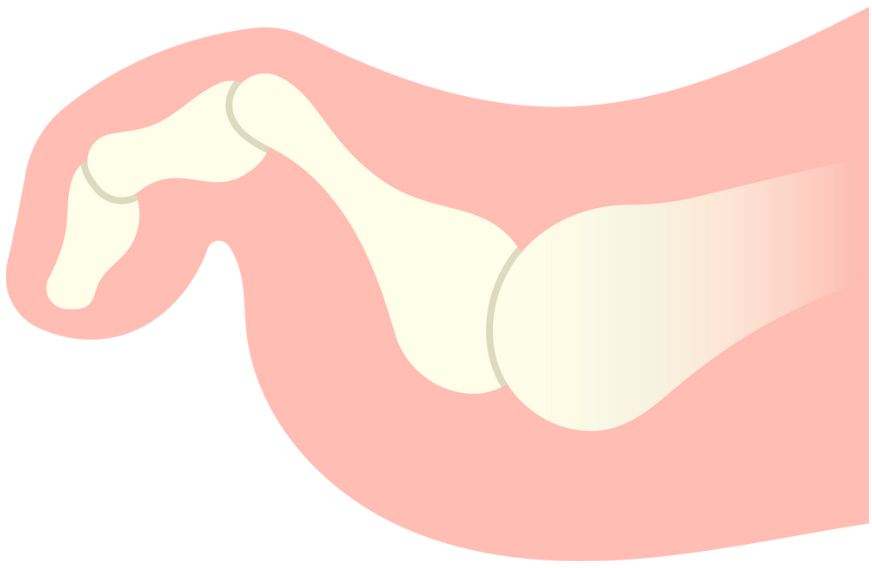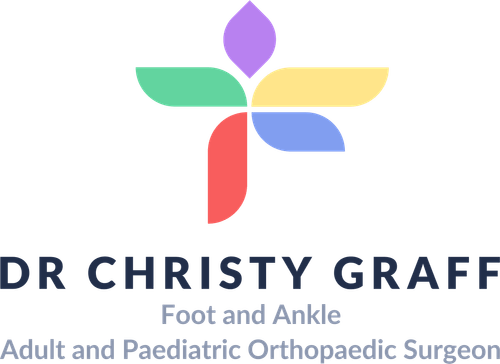Lesser Toe Correction Surgery
What is Lesser Toe Correction Surgery?
Lesser toe correction surgery is a surgical procedure to address deformities or abnormalities in the foot's smaller toes (toes 2 through 5). These conditions may include hammertoes, claw toes, mallet toes, crossover toes, or other structural deformities caused by genetics, injury, arthritis, or ill-fitting footwear. The surgery aims to relieve pain, improve function, and restore proper alignment of the affected toes.
Depending on the severity and type of deformity, surgery may involve realigning the toe bones, releasing or lengthening tendons, or fusing joints to maintain a corrected position. Lesser toe correction surgery can improve mobility, reduce discomfort, and enhance the foot's appearance.

Who is Suitable for Lesser Toe Correction Surgery?
Lesser toe correction surgery is suitable for individuals who:
- Have Persistent Pain: Patients experiencing chronic toe pain that interferes with daily activities and does not respond to non-surgical treatments such as orthotics or custom shoewear.
- Suffer from Deformities: People with visible deformities like hammertoes, claw toes, or crossover toes that cause discomfort or difficulty in wearing shoes.
- Experience Restricted Mobility: Those with limited toe movement or functionality due to structural issues.
- Failed Non-Surgical Treatments: Individuals who have tried conservative methods like toe splints, pads, or footwear adjustments without improvement.
- Have Secondary Issues: Patients who develop corns, calluses, or wounds due to toe deformities rubbing against shoes.
- Desire Aesthetic Improvement: Some individuals may seek surgery for cosmetic reasons, especially if toe deformities affect self-confidence.
Benefits of Lesser Toe Correction Surgery
The benefits of lesser toe correction surgery include:
- Pain Relief: Resolves pain caused by pressure, friction, or abnormal joint mechanics.
- Improved Function: Restores toe alignment, making it easier to walk, run, and perform daily activities.
- Enhanced Footwear Comfort: Reduces discomfort from wearing shoes and eliminates the need for special footwear in many cases.
- Aesthetic Appearance: Corrects deformities, improving the appearance of the foot and boosting self-confidence.
- Prevention of Secondary Issues: This procedure prevents complications such as corns, calluses, ulcers, or infections that may arise due to deformities.
- Long-Term Results: Proper surgical correction can provide lasting relief and reduce the likelihood of recurrence.
- Improved Quality of Life: Many patients experience better mobility and fewer physical limitations after surgery.
Types of Lesser Toe Correction Surgery
Several surgical techniques are used to address lesser toe deformities. The choice of procedure depends on the type and severity of the condition:
- Soft Tissue Procedures:
- Tendon Release or Transfer: Tight tendons are released or transferred to rebalance the forces acting on the toe, correcting its alignment.
- Capsulotomy: The joint capsule is released to allow the toe to straighten.
- Bone Procedures:
- Osteotomy: To realign the toe, a small cut is made in the bone, and part of the bone may be removed.
- Arthrodesis (Fusion): The joint is permanently fused to maintain the corrected position.
- Combination Procedures: For optimal results, a combination of soft tissue and bone procedures may be performed in complex cases.
- Implants or Fixation Devices: In some cases, temporary or permanent implants, screws, or pins are used to maintain alignment during healing.
Alternative Options to Lesser Toe Correction Surgery
For many patients, non-surgical treatments can help manage symptoms and improve function. These alternatives include:
- Footwear Modifications: Wearing shoes with a wide toe box, low heels, and good arch support to reduce pressure on the toes.
- Orthotics and Insoles: Custom orthotics or padded insoles can help redistribute weight and alleviate discomfort caused by toe deformities.
- Toe Splints or Pads: Splints, spacers, or pads can cushion the toes, maintain alignment, and relieve friction.
- Physiotherapy: Stretching and strengthening exercises can improve flexibility, reduce stiffness, and address muscular imbalances.
- Pain Management: Over-the-counter pain relievers or anti-inflammatory medications can reduce pain and swelling.
- Injections: Corticosteroid injections may reduce inflammation and temporarily alleviate severe pain.
- Lifestyle Changes: Maintaining a healthy weight can decrease pressure on the feet and slow the progression of toe deformities.
Preparation Before a Lesser Toe Correction Surgery
Preparation is crucial to ensure a smooth surgical procedure and recovery. Steps to take before surgery include:
- Consultation with Dr Graff: Discuss your symptoms, medical history, and treatment goals. Dr Graff may perform imaging tests (X-rays) to evaluate the toe deformity.
- Pre-Surgical Assessments: To ensure you are fit for surgery, blood tests, a physical examination, and other evaluations may be required.
- Discontinue Certain Medications: Follow Dr Graff’sadvice about stopping blood-thinning medications or supplements that could increase bleeding risk.
- Stop Smoking: Smoking can delay healing and increase the risk of complications. Quitting well in advance of surgery is advised.
- Plan for Post-Surgical Care: Arrange for transportation after surgery and ensure someone is available to help you during the initial recovery period.
- Prepare Your Home: Set up a comfortable, accessible area with essentials like pillows, ice packs, and easy-to-prepare meals.
Lesser Toe Correction Surgery Prognosis
The prognosis for lesser toe correction surgery is generally positive. Key outcomes include:
- Pain Relief: Most patients experience significant or complete pain relief after healing.
- Improved Functionality: Toe alignment improves, leading to better balance, walking, and overall mobility.
- High Satisfaction Rates: Many individuals are pleased with the aesthetic and functional results of the surgery.
- Durable Outcomes: Proper surgical correction can provide long-lasting results, especially with adherence to post-operative care guidelines.
- Shorter Recovery Times with Minimally Invasive Options: Patients undergoing minimally invasive surgery often experience quicker recovery and less scarring.
Recovery timelines can vary based on the type of procedure:
- Soft Tissue Procedures: Recovery may take 4–6 weeks.
- Bone Procedures (e.g., fusion or osteotomy): Recovery may take 6–12 weeks, with full results visible within months.
Rehabilitation and specialised footwear can enhance outcomes.
What if Lesser Toe Correction Surgery is Delayed?
Delaying lesser toe correction surgery can lead to several complications, depending on the severity of the deformity and the individual’s overall health:
- Progression of Deformity: The deformity may worsen without treatment, making it more challenging to correct in the future.
- Increased Pain and Discomfort: Toe deformities often lead to chronic pain that becomes harder to manage over time.
- Development of Secondary Conditions: Due to ongoing friction and pressure, issues such as corns, calluses, ulcers, or joint arthritis can arise.
- Reduced Mobility: Walking, running, or wearing shoes may become increasingly difficult, decreasing physical activity.
- Psychological Effects: Persistent pain or dissatisfaction with the foot's appearance can lead to emotional distress or lowered self-esteem.
- Surgical Complexity: Delay may result in more severe deformities, requiring more extensive surgical intervention or longer recovery times.
Contact Us
If you want more information or have any questions or problems, please contact Dr Graff at admin@christygraff.com or call the rooms at 0493 461 133.
